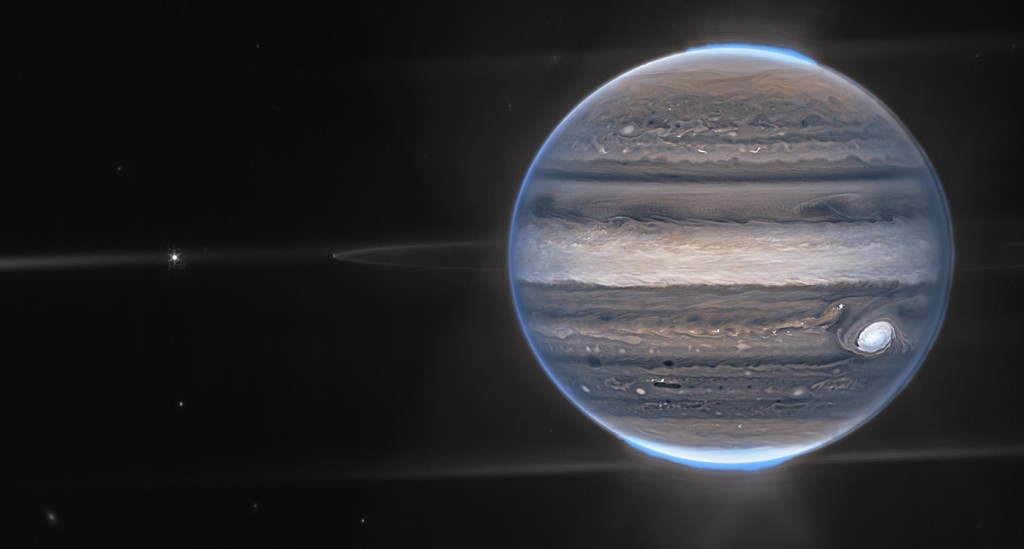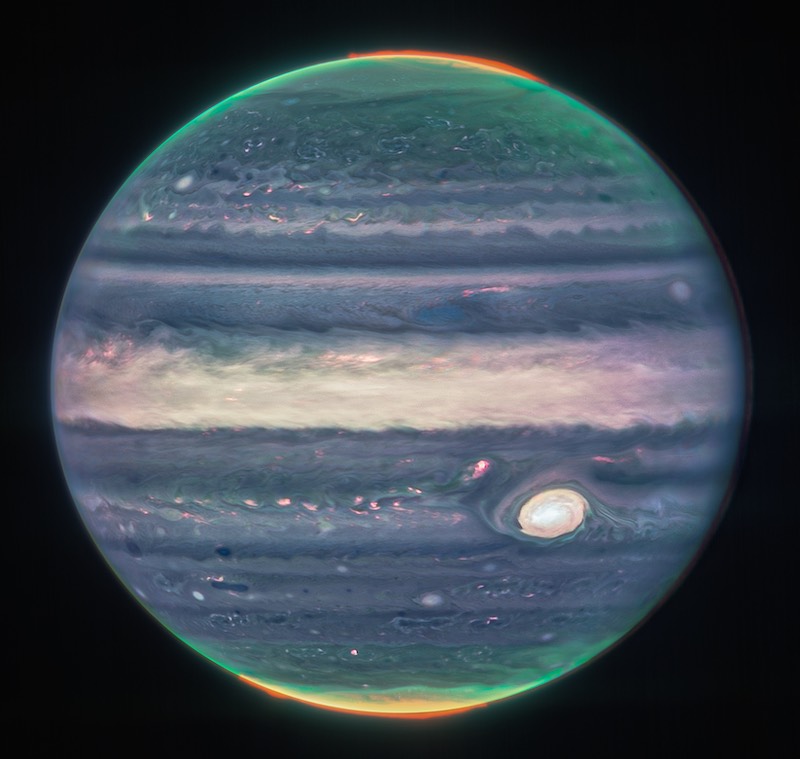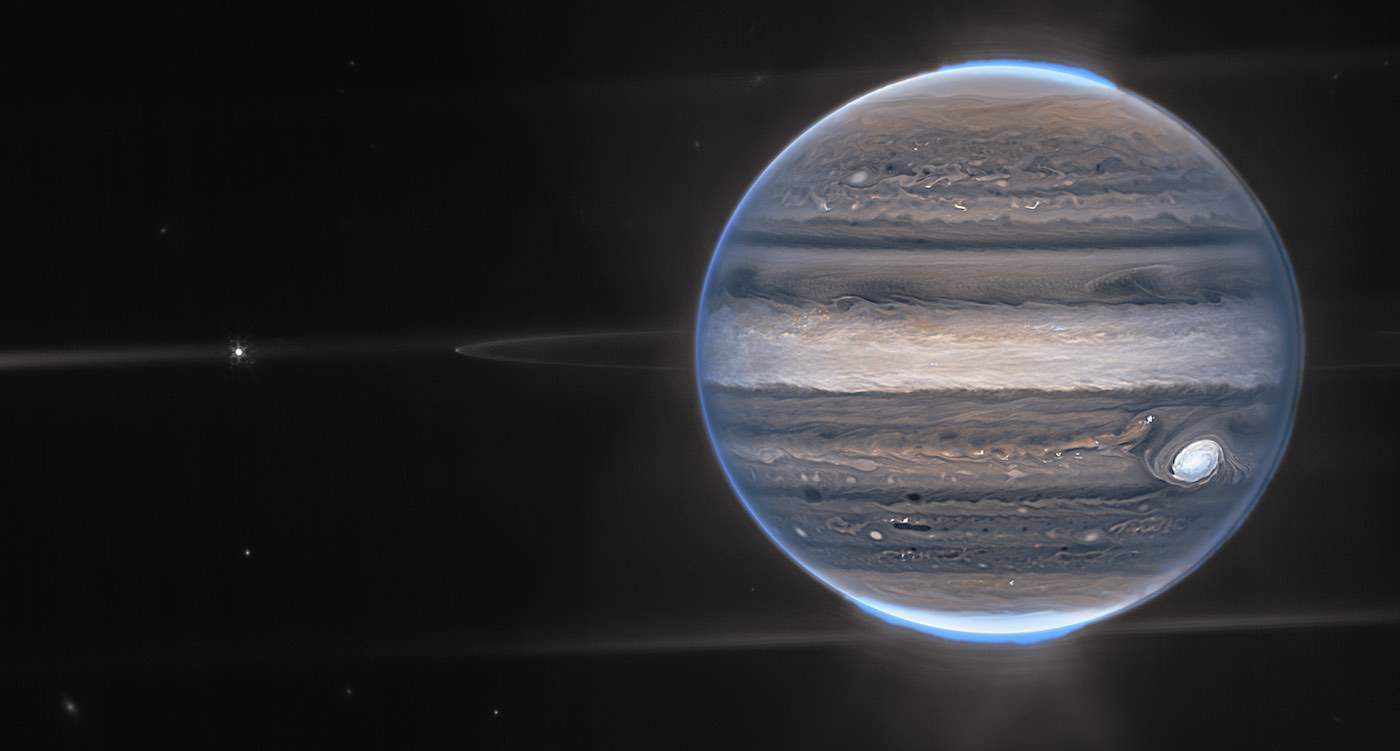
With giant storms, powerful winds, auroras, and extreme temperature and pressure conditions, Jupiter has a lot going on—and NASA’s James Webb Space Telescope has captured some incredible new images of the planet.
“We hadn’t really expected it to be this good, to be honest,” said planetary astronomer Imke de Pater, professor emerita of the University of California, Berkeley, who led the observations of Jupiter with Thierry Fouchet, of the Paris Observatory.
“It’s really remarkable that we can see details on Jupiter together with its rings, tiny satellites, and even galaxies in one image,” she said.
The two images come from the observatory’s Near-Infrared Camera (NIRCam), which has three specialized infrared filters that showcase details of the planet.
In the wide-field view (above), Webb sees Jupiter with its faint rings, which are a million times fainter than the planet, and two tiny moons called Amalthea and Adrastea. The fuzzy spots in the lower background are likely galaxies “photobombing” this Jovian view.
“This one image sums up the science of our Jupiter system program, which studies the dynamics and chemistry of Jupiter itself, its rings, and its satellite system,” Fouchet said.
In the standalone view of Jupiter below, created from a composite of several images from Webb, dreamy auroras extend to altitudes high above both the northern and southern poles of Jupiter.

Since infrared light is invisible to the human eye, the light has been mapped onto the visible spectrum using three filters.
POPULAR: Travel 2,000 Light-Years in 60 Seconds With New Video From NASA’s Webb Telescope
The auroras shine in a filter that is mapped to redder colors, which also highlights light reflected from lower clouds and upper hazes. A different filter, mapped to yellows and greens, shows hazes swirling around the northern and southern poles. A third filter, mapped to blues, showcases light that is reflected from a deeper main cloud.
The Great Red Spot, a famous storm so big it could swallow Earth, appears white in these views, as do other clouds, because they are reflecting a lot of sunlight.
“The brightness here indicates high altitude, so the Great Red Spot has high-altitude hazes, as does the equatorial region,” said Heidi Hammel, Webb interdisciplinary scientist for solar system observations. “The numerous bright white ‘spots’ and ‘streaks’ are likely very high-altitude cloud tops of condensed convective storms.” By contrast, dark ribbons north of the equatorial region have little cloud cover.
LOOK: Webb Telescope Captures Images That Move a NASA Scientist ‘to Tears’
Scientists collaborated with citizen scientist Judy Schmidt to translate the Webb data into processed images. Together, the researchers have already begun analyzing Webb data to log new science about our solar system’s largest planet—and more clues to its inner life.
Webb is an international mission led by NASA with its partners ESA (European Space Agency) and CSA (Canadian Space Agency). Learn more at NASA Blogs.
WATCH more images in the Reuters video below… (Note: GNN is not affiliated with any of their ads.)
SEND the Heavenly Images to Space-Lovers By Sharing on Social Media…




















